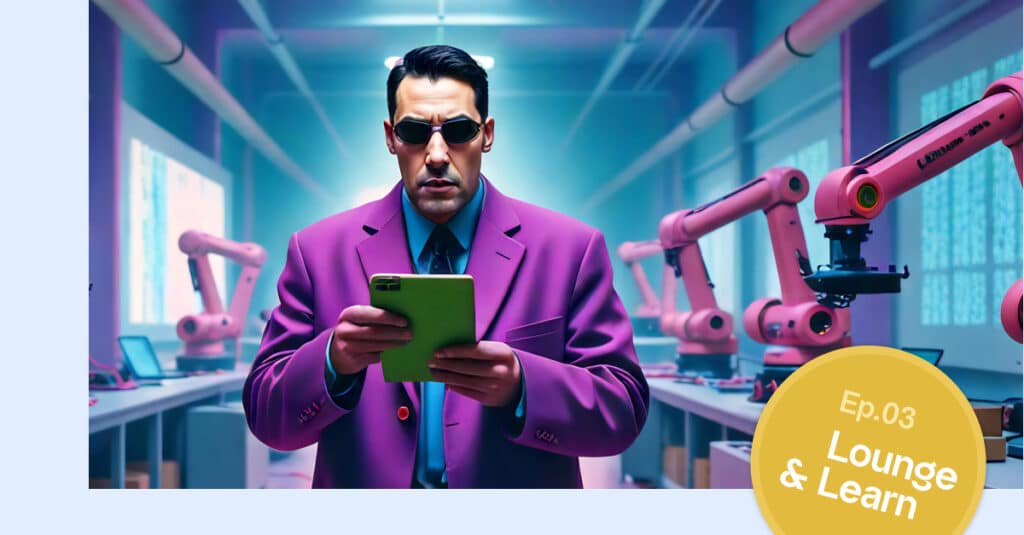
Both US presidential candidates want to support manufacturing – but in very different ways. In the confusion, many manufacturers are holding back on long-term planning and investment. Too much risk. But at least there wasn’t a shipping strike. And what’s this CapEx vs OpEx thing all about? … Read all about it in our regular round-up of manufacturing-related news.
This week’s cover story for The Economist should be good news to many: ‘The Envy Of The World: America’s Economy Is Bigger And Better Than Ever’.
However, the subtitle asks a painfully relevant question: ‘Will Politics Bring It Back To Earth?’
Difference Strokes for Different Folks
“Manufacturing accounts for about 10% of U.S. gross domestic product and an even smaller share of the nation’s jobs. But the sector bears outsized importance since the production of essential goods holds national security implications and many manufacturing workers live in key swing states,” according to ‘Trump And Harris Both Want A Manufacturing Boom. They Have Very Different Plans For Doing it’.
“Harris aims to close corporate tax loopholes and throw government support behind the production of critical goods. By contrast, Trump wants to protect domestic manufacturers with tariffs on foreign products while cutting corporate taxes and easing regulations.”
While imposing tariffs hasn’t had the most outstanding track record, it is also too soon to tell “whether the support for manufacturing provided by the Biden administration has yielded significant gains in output or jobs.”
Time will tell…
How Big A Difference Does A President Make?
“In truth, no president can single-handedly control the growth of specific industries. Larger economic forces like recessions and exchange rates tend to play a much more powerful role. But some policies can help or hinder their progress,” according to ‘To Revive Manufacturing, How Much Can a President Do?’
In short: “local factors are more important.”
For instance, where are potential employees moving? “As much as politicians might promote the number of jobs a manufacturing project creates, it has become more difficult for companies to fill positions. Sun Belt states have attracted more people in recent years with their lower cost of living, and manufacturers have taken notice.”
“Nevada’s manufacturing job base grew more than 13 percent from the beginning of 2020 to March 2023. Some of that had to do with federal policy: For example, the state received a Commerce Department grant to develop its lithium extraction and refining sector as well as battery production and recycling, which has seeded a new industry cluster.”
“But the expansion has been in the works since the early 2000s, when the state began an effort to diversify its economy beyond hospitality and entertainment.”
Besides being actively open-armed when it comes to welcoming manufacturers, Nevada has
“also benefited from its proximity to California, which has lost about 60,000 manufacturing jobs since the pandemic began.”
And so, California wants to follow Nevada’s lead. But again, there’s a familiar refrain at play: “One factor chilling investment is the election itself. Companies know that the outcome will affect taxes, trade policy, subsidies and regulations, so they are waiting for more clarity before carrying out new plans.”
As one industry expert says, “I think we’re kind of stuck here until the end of the year.”
Going From CapEx To OpEx
Another sign of uncertain times: “The growing demand for subscription models that move tech acquisition from CapEx to OpEx is driving the growth of the device-as-a-service market,” according to ‘Device as a Service Market Expected to Generate $1.8 Trillion by 2031’.
“Increasing demand for subscription-based models that help customers convert the high cost of acquiring new technology from a capital expenditure (CapEx) to an operating expense (OpEx) drives the global device-as-a-service market. Also, rising adoption of DaaS due to its adaptability, cost savings, and data security has supplemented the growth even more.”
Something solid to think about?
At Least There Wasn’t A Strike
One thing is sure: it’s good news that a large and long-term dockworker strike was averted on the US East and Gulf coasts – especially after ocean supply chains were already hit hard by conflict in the Red Sea, drought around the Panama Canal, and the Baltimore bridge collapse.
“In a statement, the union said that it had reached ‘a tentative agreement on wages’ and that its 45,000 members would go back to work, with the current contract extended until January 15. The union said it was returning to the bargaining table ‘to negotiate all other outstanding issues.’”
According to the insightful ‘Beneath the Potential Strike at U.S. Ports: Tensions Over Innovation’, one of the greatest of these issues is automation.
“Confronted by the militancy of longshore unions, port operators have deployed automation, in part to limit their vulnerability to labor troubles. Not coincidentally, dockworkers tend to look suspiciously at robots and other forms of innovation, divining threats to their livelihoods.”
“History validates their assumption that their bosses are embracing automation in part as a way to reduce costs. The most obvious example is the advent of container shipping in the 1950s.”
“Most industry experts view automation as both inevitable and positive. The questions are: Who controls the technology, and will workers be cushioned against changes with training programs that prepare them for new opportunities?”
Post-Election Boost
As perhaps a reflection of better post-election news to come: “British factories recorded their best month for two years during July, with output and hiring rising and optimism building after Prime Minister Keir Starmer’s landslide election victory,” according to ‘UK Manufacturers Show Fresh Signs Of Life After Election, PMI Shows’.
“Output and new orders increased at the fastest rate since February 2022, while manufacturers added staff for the first time in 22 months.”
So perhaps there’s hope in the unknown.
Tune in next year.
Read ‘Manufacturing – The News: Getting Constructive With Creative Destruction’.




